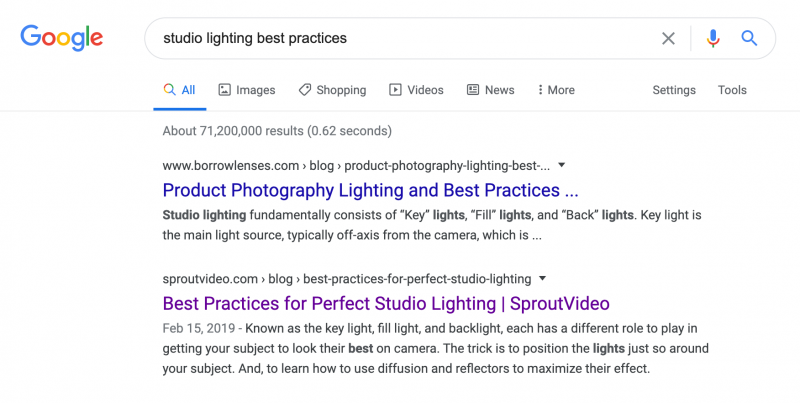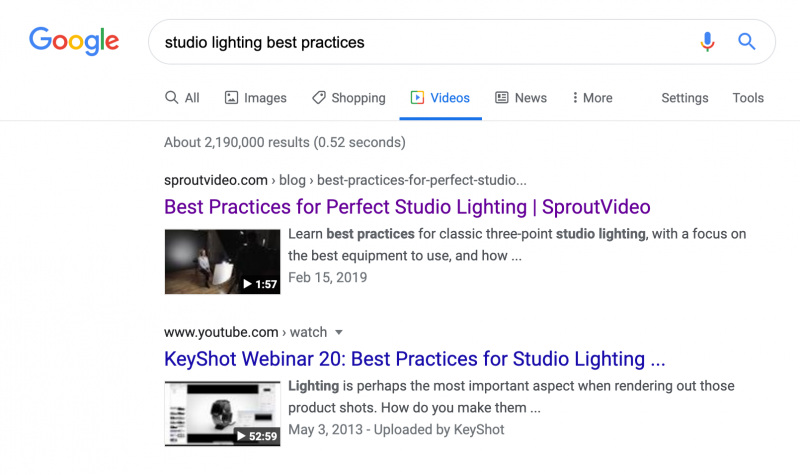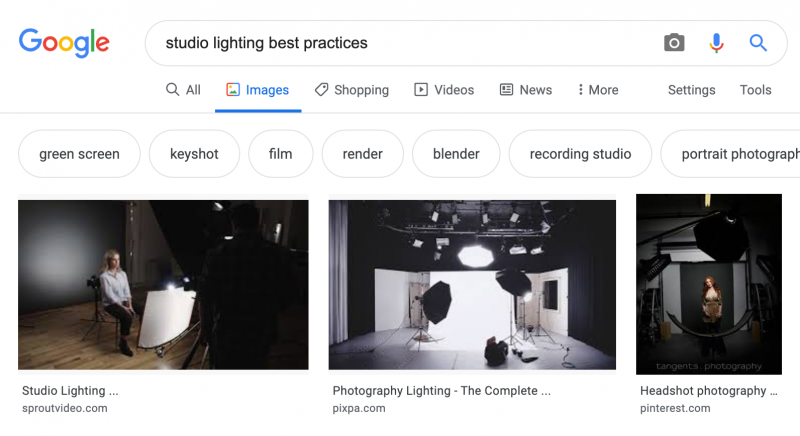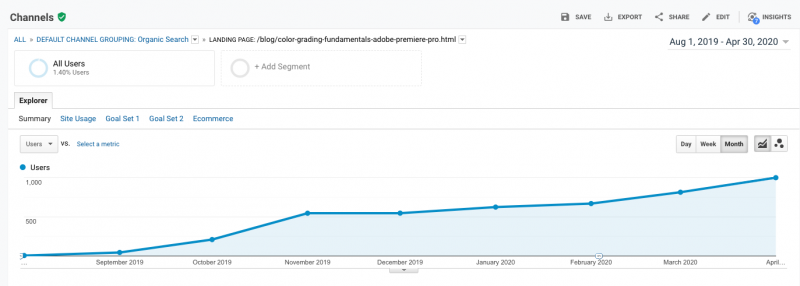Sometimes, it seems like there’s more SEO advice on the internet than cute cat videos. Some of the advice is very high quality, while some is conflicting, and still more is just wrong.
Today, we’re cutting through the noise to look at a proven, evergreen method for driving organic traffic to your site that you can easily replicate for your company. It’s all about how-to video content. Here’s a deep-dive into why it’s such an effective SEO strategy, and how to use it to attract your target audience.
Why ‘How To’ Video Content Works So Well For SEO
The “why” is truly simple. The first thing people tend to do when they don’t know how to tackle a problem is to search for an answer online. By providing those answers, you can attract organic traffic to your site.
This strategy has a lot of appeal. For starters, when offering solutions, you can plug relevant products and services. And, you not only have the opportunity to improve your brand recognition, you can position yourself as a thought leader to boot. Finally, by solving an issue for your audience, you’re providing value, which improves brand affinity and helps establish your website as a useful resource online.
Why Adding Video Boosts This Strategy
You might be thinking that you could just write out answers in a text-based article and call it a day. However, adding video provides specific SEO benefits that you would otherwise miss out on.
Video Helps With Onsite SEO
Searches that begin with “how to…” signal a specific type of search intent. A search engine choosing which content to deliver for that type of query will be looking for certain attributes in the results.
A thorough, structured article that fully answers the targeted question is definitely a cornerstone of this strategy. If you also include multimedia, your page stands a better chance of being ranked highly by search engines. Adding video indicates that your page is high quality and is likely to be more useful to visitors than pages without video content.
Including video also enables you to enhance your keyword strategy by optimizing all the video metadata on the page. That will help improve your keyword density and overall relevancy to your targeted keyword phrases.
And, a video sitemap can help your page get indexed against specific search terms. It also increases the likelihood your site will appear in multiple search listing tabs for a query (example below).
While video metadata and sitemaps sound very technical, here is a video guide that shows just how easy it is to set them up using SproutVideo’s built-in SEO tools:
Finally, video also helps improve average time on page, which sends a signal back to search engines that visitors are finding useful information there. By providing engaging video content, you’re reducing the chances they’ll quickly scan your article sections and bounce.
From our own blog, of our top twenty-five articles for organic traffic, nine include original video content. The average time on page is 17% higher on average for those articles.
Video Helps With Offsite SEO
A solid backlink strategy is an essential part of growing your organic traffic. Video content can help with that because it is highly shareable. It adds an engaging, personal touch and boosts the perceived value of your page.
If your article and video are high quality, you’re more likely to earn backlinks to your content because other websites will link to it as a resource in their own articles. Of course, outreach is always recommended as part of your backlink campaign efforts.
Video Helps Your Search Visibility
Of course, the number one goal is to appear at the top of the first page out of all results on Google. However, using multimedia in your content helps improve your visibility beyond page one.
Here’s an example from our own blog, where we are currently ranked in the number two spot for “studio lighting best practices” in the All Results tab in Google:

However, if you click over to the Videos tab, we are in the number one spot:

And we’re also ranked number one for the image results as well:

This example shows that by adding rich content to your article, you can improve the overall visibility of your website across the different types of search results. In turn, that increases the chances someone will click through to your website.
So how can you get this to work for your website? The trick is knowing which questions to answer, and doing it in a way that stands out from the crowd of other answers.
Which How To’s Are Right For You?
There are endless options for the types of questions you could answer for your audience. So how do you know which are worth spending your time on?
It’s important to pick a subject that is closely related to your business. It’ll be easier to grow leads and sales from that traffic if your site visitors are ultimately looking for answers related to something you offer.
Inspiration can come from many places. Check your customer support channels to see what types of pre-sales or implementation questions people have before signing up. Or, look at competitors and thought leaders in your space to see which subjects they’re addressing. Events and conferences can also provide ideas. Check the topics of keynotes to see what’s top of mind for industry experts.
Once you’ve got some ideas, there are a few key factors you have to consider when planning your video SEO strategy. First up is your authority on the topic, next is search volume and relevancy to your target audience, then the search intent of the user, and finally, your competition.
Authority
When deciding which results to show on the first page, Google and other search engines try to determine which sites can be considered an authority on a given topic. In this context, authority is another word for expert, or thought leader.
It’s important to play to your strengths. If your company is uniquely positioned as an authority on a subject, even if it’s fairly specific, you can attract a lot of organic traffic by focusing on that niche.
If you’re just starting out, you can build authority by publishing consistently on a given subject, and earning backlinks from other websites with content on the same topic. Featuring or linking out to other experts and high authority websites is another tactic to try.
There are very few shortcuts to building authority. Usually, it just takes time and sustained effort.
Volume and Relevancy
The next factor to consider is the search volume for your target key phrases, and their relevancy to your audience. The goal is to ensure you’ll actually hit your mark when producing your content. After all, if your area of expertise is not relevant to your target audience, or is something hardly anyone searches for online, it won’t be worth producing videos about it.
Usually, it’s a bit of a trade off. Typically, you’ll find that search volume is lower for “long tail” and highly specific keywords, but the relevancy will be high for certain segments of your audience. Conversely, search volume will be higher for broader, shorter phrases, but the relevancy to your specific audience will be lower.
For example, searching for the term “home repair” will deliver very broad results online. In contrast, searching for “how to repair windows” will deliver much more targeted results. Although more people search for “home repair” in total, if you are selling window repair services, you’re much better off optimizing against the more narrow term to reach your target audience.
Ideally, you’ll identify a topic that fits your expertise, with sufficient search traffic from your targeted audience.
Search Intent
In the past few years, Google has changed up its algorithm significantly to reflect the ultimate goal of the user typing the query. Today, search intent is one of the biggest ranking factors for SEO.
For example, if someone searches for a specific product, Google understands they are likely shopping or looking for reviews. If someone starts a search with “how to…” Google knows they are looking for guides and step-by-step articles. The results pages will reflect that.
The key here is framing. How you frame your content around your chosen key phrases has to match the intent Google understands for that search. If there is a mismatch between the search intent and the type of page you’ve built, your chances of ranking are very low.
Basically, your blog post about your product is unlikely to rank for a search to buy that product. Your product landing page will rank instead. Your homepage is unlikely to rank for comparison research. And so on.
When researching your how-to topic, make sure your content is a close match to the intent of the search. You’re not necessarily trying to imitate the other results, just making sure your page will be a fit for that particular type of search. By focusing on the ultimate goal of the person you are trying to reach, you’ll be much more likely to get it right.
Competition
With SEO, your competition might not come from other companies you actively compete with for customers. It comes from other websites that have already published content on a subject that’s ranked highly by search engines.
When planning your content, start by searching the Internet using phrases your audience is likely to use when researching a question related to your niche. What does the first page of results look like? What kind of content is being displayed?
Ideally, you’re looking for results that indicate low competition for that particular key phrase. Low competition is usually evidenced by sites with low authority being ranked for the term, content that is inaccurate, outdated, or no longer being updated, or content that could easily be improved upon by a new or more thorough approach.
You can also use tools specifically built for this purpose to evaluate ranking competition for keywords. We use Ahrefs and Google Keyword Planner, but there are many other options out there.
Although low competition is ideal, it’s somewhat rare for search terms that aren’t incredibly specific. Of course, you can successfully target high competition search terms with your video content. You just have to ensure you’re offering something better and differentiated compared to existing search results.
Where To Share
To maximize the benefits of your how-to video SEO strategy, you should share your video content on your own website. And, use a professional video hosting platform with built-in SEO tools to host and embed your videos.
The best place for how-to video content is usually a blog or a knowledge base, but it could live elsewhere on your site. It really depends on the type of content you produce, and the layout of your website. Then, be sure to take these four steps for technical SEO.
- Make sure the page on which you’re embedding video is indexable by Google and other search engines.
- Update or create a video sitemap. This is where all the video metadata lives, and will make it easy for search engines to find it.
- Add any relevant open graph tags to encourage sharing and help with backlinks.
- Use structured data to enhance how your content appears in search results.
To build on that last point, you can either follow the guidelines for structuring “how-to” content (if your article is a series of sequential steps to achieve a specific task) or for video (applies more generally to video content), whichever is a better fit.
We have a guide with seventeen video SEO best practices if you want to take things even further.
Measuring Success
Unless you have a perfect understanding of Google’s algorithm, you’re not always going to get this right (even Google doesn’t). Despite your best efforts, not all of your how-to content will rank as highly as you’d like. And, search trends can change over time. A post that doesn’t rank initially can suddenly start attracting a lot of traffic, while a popular one can fall out of favor.
The key to success is to get the fundamentals right, and make a sustained effort to improve over time. Track your results to see what is working, and where you can improve.
Ideally, you’ll start to see patterns like this chart, taken from one of our own blog posts about color grading in Adobe Premiere Pro:

At first, this post did not attract much in the way of organic traffic. However, around October of 2019, it started to gain some traction. Finally, in February, right after we redesigned our blog, it really started to take off.
This illustrates why you can’t just publish one how-to and call it a day. If we’d only made this one post, we might not consider our strategy to be much of a success. However, by targeting multiple niche queries with compelling how-to video content, you can see how the organic traffic really starts to add up.
Have you had recent success with video SEO? Share your tips in the comments below, or ask questions to get expert advice!
The post Why How-To Video Content is SEO Gold appeared first on SproutVideo.
from SproutVideo https://sproutvideo.com/blog/why-how-to-video-content-is-seo-gold.html
via IFTTT
from
https://johnsmith0190.tumblr.com/post/624378603752374272
No comments:
Post a Comment